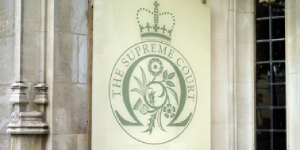
Matthews: Rates claimed were well over the top
The new guideline hourly rates (GHR) will not formally come into force until 1 October but the High Court yesterday took them into account when dealing with a summary assessment.
His Honour Judge Matthews in Bristol found the work done in the case did not justify exceeding the new rates.
The Master of the Rolls, Sir Geoffrey Vos, announced last week that he was accepting the recommendations of the Civil Justice Council working group on the GHR. They will come into force on 1 October.
Dealing with the latest stage of the long-running case of Axnoller Events Ltd v Brake & Anor, in which the defendants were ordered to pay 50% of the claimants’ costs of an application notice, the judge was faced with charging rates from London litigation practice Stewarts Law of £695 for grade A, £525 and £445 for grade B, £370 and £325 for grade C and £210 for grade D.
The new rates approved by the Master of the Rolls for London 1 band work are £512 for grade A, £348 for grade B, £270 for grade C and £186 for grade D.
HHJ Matthews accepted that the 2010 GHR were now “well out of date” and of “little assistance” in a case like this.
“Although they are strictly speaking not yet in force, the new 2021 guidelines (which have been approved by the Master of the Rolls) have already been used in summary assessment in the High Court: see eg ECU Group PLC v Deutsche Bank AG & Anor [2021] EWHC 2083 (Ch). I consider that I should take these guidelines into account.”
Mr Justice Miles in ECU Group last month was referred to what were then the rates proposed by the Civil Justice Council but in allowing higher grade A rates did not comment on them except to note that “guidelines are only that”.
HHJ Matthews continued: “Even so, I consider that the rates claimed here are well over the top, even for London firms.
“All the fee-earners except the trainee solicitor and the costs draughtsman are charged at more than £100 an hour in excess of the new top guideline rate (for ‘very heavy commercial and corporate work by centrally based London firms’).
“I accept that it is only a guideline, and there will be cases which justify an even higher rate. But I do not think that the work done on this application justifies anything in excess of that rate. If anything, it justifies less.”
The judge reduced the claim of £48,000 to £25,000 on the basis that the hourly rates were too high, the work done on documents was “significantly more than it should be”, and the attendance at the hearing of one or other of partner Ian Gatt QC and senior associate Harry Spendlove should not be charged for.














Leave a Comment